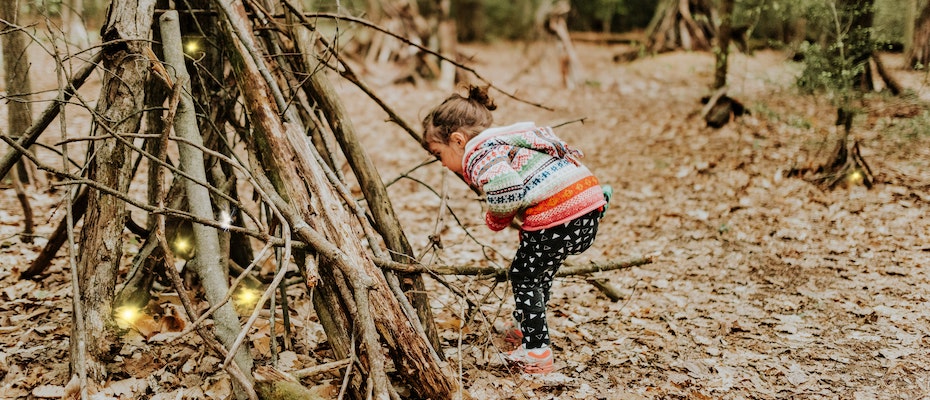Is it time EPs advocated for children and young people to have increased contact with nature?

While preparing a systematic literature review, I came across a recent publication in a journal aimed at educational psychologists (EPs) which prompted me to prepare this blog.
For the main research of my top-up doctorate, I’m looking at the impact that nature can have on human functioning. At the start of this process, I was not aware of any EPs writing or discussing this topic. To me, it seemed so ‘fringe’, I was even wary of raising it with the course tutors during my initial interview. The field of research was represented by environmental psychologists, eco-psychologists, epidemiologists, landscape and urban planners but EPs were not talking about the natural world.*
However, since the Covid-19 pandemic and the scientific consensus that climate breakdown is caused by human activity, I have noticed increased EP research focus in this area. The pandemic seems to have led to a growing interest in the mainstream media regarding the connection between mental health and contact with nature (e.g. A third of adults more interested in nature during coronavirus pandemic | Discover Wildlife).
Attendance at the ‘EPs and Climate Change’ interest groups taught me that there are many EPs across the country who are conducting research, adding their voice and skills to wider psychology and climate breakdown fora and are gently challenging their employers to move towards more climate friendly practices. The recent publication of the BPS discussion paper “The Climate Crisis: Children, Young People and Educational Psychology” further places climate change and the human-nature relationship within the realm of the EP (O’Hare, 2022).
Therefore, while my small corner of research interests does not address these global issues directly, it may be of interest for EPs to read a little of what I have learned so far about the nature-human connection sitting, as it does, within the wider context of the climate crisis.
The nature-human connection and attention control
The first point to note is that the field of research is extensive with measured outcomes including
- social skills
- emotional well-being
- pro-environmental behaviours
- academic progress and attention control
Summarising the research in all these areas would not be possible within a blog post and so to narrow the scope I will focus on the latter theme as this was the focus of one of my assignments.
The second key point to note is that the research I encountered varied considerably in terms of quality (e.g. small sample sizes, absence of control groups, absence of participant voice) and consistency of concept. To briefly expand that latter point, ‘nature’ can range from a view from a window to the amount of greenery around a home (as assessed by satellite imagery), participating in a gardening club, equine therapy or a two-week wilderness camp.
My reading of the available literature between 2020 and 2021 indicated that there is support for the assertion that contact with nature may be linked with lower ratings of behaviours associated with Attention Deficit/Hyperactivity Disorder or AD/HD (e.g. attention and impulse control) and superior performance on attention control tasks. However, this finding was more consistently reported within studies using a correlational design which does not enable us to be certain about cause and effect.
Research using an experimental design has had mixed results and, as noted above, have used small sample sizes. However, it did seem that contact with nature gave participants a benefit beyond simply ‘taking a break’ because when breaks were compared with a control group, the ‘nature group’ generally outperformed the ‘urban’ control break groups.
I submitted my assignment in 2020, took a leave of absence from the doctorate to help me manage home-schooling and working during the pandemic and (aside from doing a bit more exploration with parents/teachers when they noted a child presented as calmer when outside/in Forest School) didn’t do much with my new knowledge.
Fast forward to the latter half of 2022, I was pleasantly surprised to come across a recently published systemic review of research by EPs looking at the impact of short-term exposure to nature on cognitive performance. Mason and colleagues found that 12 of the 14 studies they reviewed reported cognitive benefits for students (from elementary to university) following passive contact with nature (Mason et al., 2022).
How could EPs make use of this information?
Research the impact of nature on children in a school context
The first key area I would suggest is that EPs are well-placed to bring their research skills to bear on exploring whether contact with nature improves learning outcomes for children within a school context. As Mason et al. (2022) noted, many of the tests of attention control (where used) may have limited utility or relevance to everyday school life. It would be helpful to know if the cognitive restoration effect is also apparent in math or reading comprehension activities.
Explore the role of nature through consultation
The second area to consider is everyday consultation with setting staff and parents or carers by simply exploring whether a preference for being outside already exists; what impact (if any) is noted in the child following contact with nature and supporting staff to involve the child or young person in evaluating the impact of increased contact with nature in the school day. If movement breaks are already in place, EPs could help schools and parents to explore if there is a benefit to these breaks taking place outside if possible.
Involvement in school design
Thirdly, while we are rarely asked to input into the design or planning of new schools, EPs could ensure schools are aware of the considerable body of research that looks at the link between nearby nature and attention control when they are aware that new buildings are planned. In fact, EPs have been involved in re-designing a playground in small scale study which also demonstrated the importance and utility of ensuring pupil’s voices are heard (Pearson & Howe, 2017).
Advocate for nature-based initiatives
Finally, many EPs will be familiar with Forest School. In my experience, Forest School is used primarily in the early years – although, anecdotally, I am aware of this offer being extended to older students. EPs could help make the case for extending the use of Forest School beyond primary as this could be a pre-existing format which could easily be adapted to enable curriculum learning to include contact with nature. EPs could also support endeavours to improve the methods through which Forest School is evaluated.
Aoife’s EP Reach-Out webinar: What impact does contact with nature have on us?
References and further reading
Bradley, K. & Male, D. (2017) ‘Forest school is muddy and I like it’: Perspectives of young children with autism spectrum disorders, their parents and educational professionals. Educational and Child Psychology. 34 (2)
Mason, L., Ronconi, A., Scrimin, S., & Pazzaglia, F. (2021). Short-term exposure to nature and benefits for students’ cognitive performance: A review. Educational Psychology Review, 1-39.
O’Hare, D.P. (2022). The climate crisis, children, young people and educational psychology. British Psychology Society Division of Educational and Child Psychology (BPS DECP).
Pearson, R., & Howe, J. (2017). Pupil participation and playground design: Listening and responding to children’s views. Educational Psychology in Practice, 33(4), 356-370.




